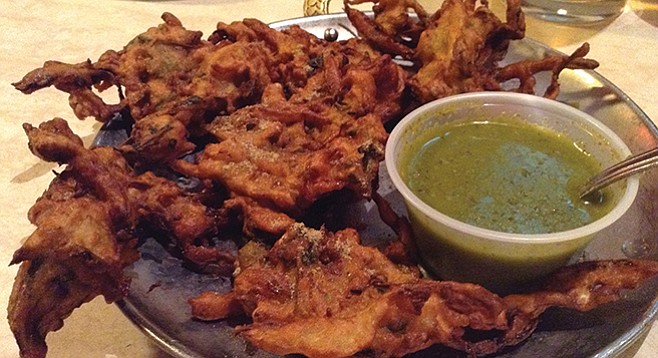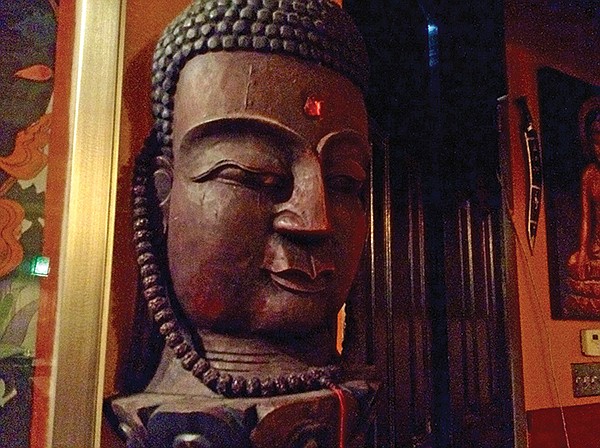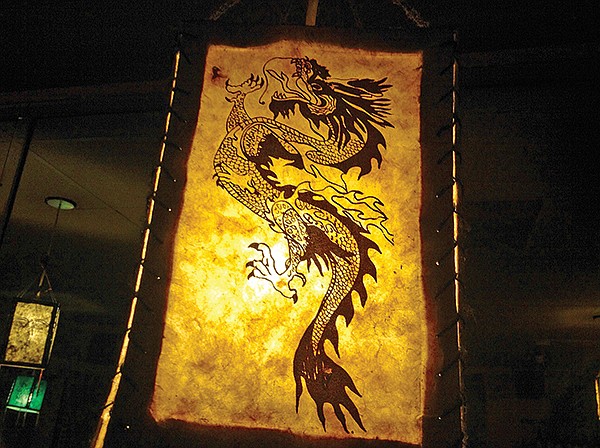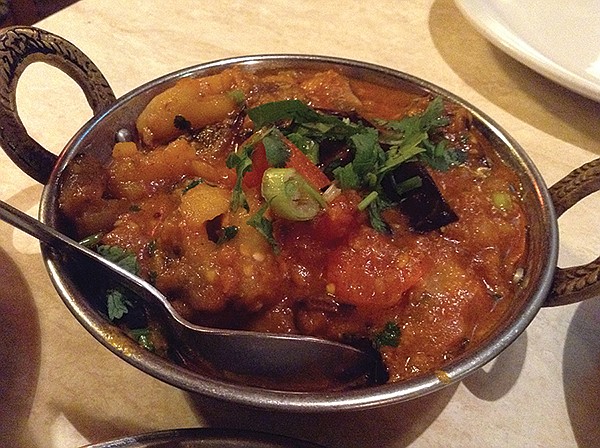 Facebook
Facebook
 X
X
 Instagram
Instagram
 TikTok
TikTok
 Youtube
Youtube


That terrible earthquake that hit Kathmandu and Everest last month and the aftershock last week got me feeling terrible for the people up there, and then curious about Nepal. Decided to find out.
Like, how different is Nepali food from lowland Indian food? How hot is it? I had always heard that mountain cultures were less spicy in their tastes than tropical lowland peoples’. And their curries had less yogurt, and less coconut milk, because, well, coconut palms don’t grow on Mount Everest. And that they are more vegetarian up there because they rely on yaks for meat, and from April to July you just don’t eat meat, because yaks are still thin from the winter.
Also, I read that because Nepal is closer to Tibet and China than India is, noodles are more common. And, especially after a big influx of Tibetan refugees, momos, small stuffed dumplings, became the street food of Kathmandu.
Which is why I’m trying to find this Nepalese place tonight. Even though it’s already 8:45. It’s called “A Taste of the Himalayas.”
Aha. Thar she blows, squeezed between a Smoke Shop and a Fluff’n Fold Coin Wash. They’re open. I go in to this low room lit by blue and red paper lanterns with Hindu prayers painted on them. It has two separate rooms of tables and walls ringed by prayer flags like the ones you see fluttering furiously in Everest movies. The Hindu goddess Tara sits on the counter, and behind, next to a yak’s tail fly-whisk, stands the dark head of a Buddha. A ruby glows from his forehead.
“Sir, we close at nine,” says the girl.
“If I promise to be quick?” I plead.
She looks back at the guy behind the counter. He nods. She leads me to the table and brings a menu, like, instantly.
“Sorry for what happened in your country,” I say. “Is your family okay?”
“Oh, yes. They’re fine,” she says. “The family of everyone here is fine.”

She doesn’t seem keen to talk about it, so I look through the food possibilities. Natch, start at appetizers. Vegetable pakora (basically a deep-fried collection of onion, spinach, cabbage, and “Himalayan spices and herbs” with a mint chutney to dip them into) costs $3.95. Or vegetable samosas stuffed with potatoes and green peas, with a tamarind sauce, or a “chicken choila,” chicken cooked in a clay oven, again with “Himalayan spices” ($7.95).
Lot riding on Himalayan spices. Guess we must be talking about jimbu, the herb that, from what I hear, holds the entire Himalaya range together, because it covers bare ground that would become landslide material if jimbu wasn’t there. But it also tastes like onion and chives, and tangs up any dish. And Nepalese say it is good for flu and stomach pains. The timur berry provides the heat. They say it’s like Szechwan pepper.
They also have the whole range of lowland Indian dishes, like chicken tandoori, baked in the incredibly hot clay oven and mixed with yogurt and veggies ($14.95). Or kebabs marinated in yogurt, like the lamb ($15.95). Or even seafood — go figure! There ain’t no country further and higher from the sea than Nepal — but they have fish tikka masala (salmon in a tikka masala gravy) for $13.95.
No way I’m going to that level, and seeing I have to decide tout de suite, I go for the veggie pakora appetizer and the aloo bhanta, a combo of eggplant and potatoes cooked in “Himalayan-style curry sauce.” Costs $9.95. Plus, I go mad and get a garlic cilantro nan bread ($2.95) and a Nepali beer ($3.95). I choose the “Real Gold” because it’s supposed to be the heavier of the two they have.
But I regret that beer decision straight away. Because, dang it, the other beer is “Mustang,” not named after the wild and crazy American horse, but for that wild and mysterious country that crosses Nepal and Tibet, the real Shangri-La of the Himalayas, the hidden kingdom of Mustang. Always wanted to go there...
I ask for my aloo bhanta to be spicy-hot. “How much on a scale of ten?” Sanjiv, the manager, asks.
“How hot do Nepali people like their food?” I ask. “As hot as Indians like it, or not as hot?”
“Hotter,” Ranjiv says, “because we live in the mountains where it can be very cold.”
Okay.

I go for 9.5.
First Sanjiv brings out a little free bowl of lentil soup; then the spidery, deep-fried veggie pakora. They are totally crisp and crunchy and mint-hot after you dip each one in the green, peppery mint sauce. Also, it comes on a way-cool metal plate with thick brass handles. Makes this all feel über Indian.
But the unexpected star has to be my aloo bhanta, which is eggplant and potatoes cooked in “Himalayan-style” curry sauce. Basically more tomatoey, I’m guessing. I always wonder: what did the rest of the world do before the Spanish brought tomatoes back from the New World?
Whatever, I ladle out basmati rice from a bowl onto my plate and flood it with this really great eggplant-potato and tomato combo. And, whoa! Sanjiv came through on the promise of heat. I’m crying me a river here. And also, feeling a little guilty at enjoying myself while so much misery rules back where this food came from.
Post script: had to come back. One, to try a momo. A vegetarian one, stuffed with cabbage, spinach, mushrooms, onion, cilantro, and something peppery. Costs $7.95. You can see the Chinese influence. Also get a bottle of Mustang ($3.95), just so I can say I drank the real thing from Mustang. Sigh. It actually tastes just like a standard lager, but no. With each glug I’m up in the snows and soaring rocks, and keeping an eye out for yeti.
Prices: Vegetable pakora, $3.95; vegetable samosas, $3.95; chicken choila, (cooked in clay oven with “Himalayan spices”), $7.95; chicken tandoori, $14.95; lamb boti kebab, $15.95; fish tikka masala (salmon in a tikka masala gravy), $13.95; aloo bhanta (eggplant, potatoes in Himalayan-style curry sauce), $9.95; garlic cilantro nan bread, $2.95; Mustang Nepali beer, $3.95
Hours: 11:00 a.m.–9:00 p.m. daily; till 10:00 p.m., Friday, Saturday
Buses: 35 (best), 8, 9
Nearest bus stops: Midway at East Drive (35); Sports Arena Boulevard at East Drive (8, 9)



That terrible earthquake that hit Kathmandu and Everest last month and the aftershock last week got me feeling terrible for the people up there, and then curious about Nepal. Decided to find out.
Like, how different is Nepali food from lowland Indian food? How hot is it? I had always heard that mountain cultures were less spicy in their tastes than tropical lowland peoples’. And their curries had less yogurt, and less coconut milk, because, well, coconut palms don’t grow on Mount Everest. And that they are more vegetarian up there because they rely on yaks for meat, and from April to July you just don’t eat meat, because yaks are still thin from the winter.
Also, I read that because Nepal is closer to Tibet and China than India is, noodles are more common. And, especially after a big influx of Tibetan refugees, momos, small stuffed dumplings, became the street food of Kathmandu.
Which is why I’m trying to find this Nepalese place tonight. Even though it’s already 8:45. It’s called “A Taste of the Himalayas.”
Aha. Thar she blows, squeezed between a Smoke Shop and a Fluff’n Fold Coin Wash. They’re open. I go in to this low room lit by blue and red paper lanterns with Hindu prayers painted on them. It has two separate rooms of tables and walls ringed by prayer flags like the ones you see fluttering furiously in Everest movies. The Hindu goddess Tara sits on the counter, and behind, next to a yak’s tail fly-whisk, stands the dark head of a Buddha. A ruby glows from his forehead.
“Sir, we close at nine,” says the girl.
“If I promise to be quick?” I plead.
She looks back at the guy behind the counter. He nods. She leads me to the table and brings a menu, like, instantly.
“Sorry for what happened in your country,” I say. “Is your family okay?”
“Oh, yes. They’re fine,” she says. “The family of everyone here is fine.”

She doesn’t seem keen to talk about it, so I look through the food possibilities. Natch, start at appetizers. Vegetable pakora (basically a deep-fried collection of onion, spinach, cabbage, and “Himalayan spices and herbs” with a mint chutney to dip them into) costs $3.95. Or vegetable samosas stuffed with potatoes and green peas, with a tamarind sauce, or a “chicken choila,” chicken cooked in a clay oven, again with “Himalayan spices” ($7.95).
Lot riding on Himalayan spices. Guess we must be talking about jimbu, the herb that, from what I hear, holds the entire Himalaya range together, because it covers bare ground that would become landslide material if jimbu wasn’t there. But it also tastes like onion and chives, and tangs up any dish. And Nepalese say it is good for flu and stomach pains. The timur berry provides the heat. They say it’s like Szechwan pepper.
They also have the whole range of lowland Indian dishes, like chicken tandoori, baked in the incredibly hot clay oven and mixed with yogurt and veggies ($14.95). Or kebabs marinated in yogurt, like the lamb ($15.95). Or even seafood — go figure! There ain’t no country further and higher from the sea than Nepal — but they have fish tikka masala (salmon in a tikka masala gravy) for $13.95.
No way I’m going to that level, and seeing I have to decide tout de suite, I go for the veggie pakora appetizer and the aloo bhanta, a combo of eggplant and potatoes cooked in “Himalayan-style curry sauce.” Costs $9.95. Plus, I go mad and get a garlic cilantro nan bread ($2.95) and a Nepali beer ($3.95). I choose the “Real Gold” because it’s supposed to be the heavier of the two they have.
But I regret that beer decision straight away. Because, dang it, the other beer is “Mustang,” not named after the wild and crazy American horse, but for that wild and mysterious country that crosses Nepal and Tibet, the real Shangri-La of the Himalayas, the hidden kingdom of Mustang. Always wanted to go there...
I ask for my aloo bhanta to be spicy-hot. “How much on a scale of ten?” Sanjiv, the manager, asks.
“How hot do Nepali people like their food?” I ask. “As hot as Indians like it, or not as hot?”
“Hotter,” Ranjiv says, “because we live in the mountains where it can be very cold.”
Okay.

I go for 9.5.
First Sanjiv brings out a little free bowl of lentil soup; then the spidery, deep-fried veggie pakora. They are totally crisp and crunchy and mint-hot after you dip each one in the green, peppery mint sauce. Also, it comes on a way-cool metal plate with thick brass handles. Makes this all feel über Indian.
But the unexpected star has to be my aloo bhanta, which is eggplant and potatoes cooked in “Himalayan-style” curry sauce. Basically more tomatoey, I’m guessing. I always wonder: what did the rest of the world do before the Spanish brought tomatoes back from the New World?
Whatever, I ladle out basmati rice from a bowl onto my plate and flood it with this really great eggplant-potato and tomato combo. And, whoa! Sanjiv came through on the promise of heat. I’m crying me a river here. And also, feeling a little guilty at enjoying myself while so much misery rules back where this food came from.
Post script: had to come back. One, to try a momo. A vegetarian one, stuffed with cabbage, spinach, mushrooms, onion, cilantro, and something peppery. Costs $7.95. You can see the Chinese influence. Also get a bottle of Mustang ($3.95), just so I can say I drank the real thing from Mustang. Sigh. It actually tastes just like a standard lager, but no. With each glug I’m up in the snows and soaring rocks, and keeping an eye out for yeti.
Prices: Vegetable pakora, $3.95; vegetable samosas, $3.95; chicken choila, (cooked in clay oven with “Himalayan spices”), $7.95; chicken tandoori, $14.95; lamb boti kebab, $15.95; fish tikka masala (salmon in a tikka masala gravy), $13.95; aloo bhanta (eggplant, potatoes in Himalayan-style curry sauce), $9.95; garlic cilantro nan bread, $2.95; Mustang Nepali beer, $3.95
Hours: 11:00 a.m.–9:00 p.m. daily; till 10:00 p.m., Friday, Saturday
Buses: 35 (best), 8, 9
Nearest bus stops: Midway at East Drive (35); Sports Arena Boulevard at East Drive (8, 9)